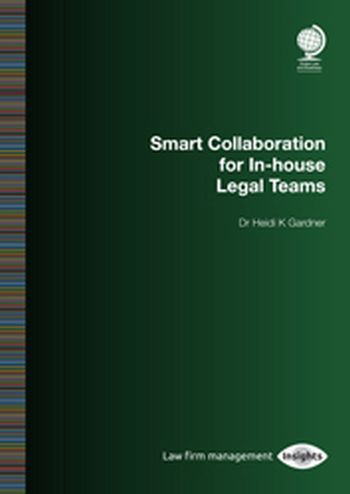
In-house legal teams are under more pressure than ever to add value to their organisations. This Special Report combines the rigour of Harvard research with a pragmatic focus based on input from hundreds of General Counsels, in-house lawyers, CEOs and board members to show why and how legal teams work across silos – what we call ‘Smart Collaboration.’ It includes the business case, practical tips, case studies and tools to help legal teams master the four essential ‘vectors’ of collaboration:
Vetted by dozens of General Counsel and in-house lawyers, this report will benefit all members of in-house legal teams and those who work with them (eg, executives, heads of other corporate functions, recruiters and consultants). Partners and leaders in law firms will also gain from a deeper understanding of their clients’ operations and aspirations.